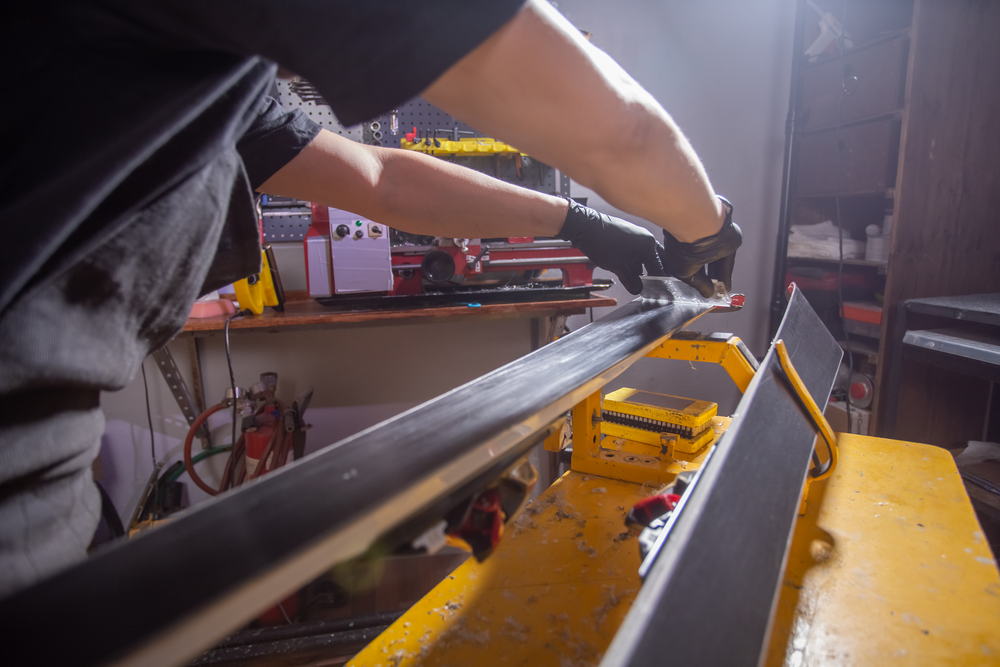
Ski and snowboard tunes are part and parcel with running a ski shop. We offer the service to local Salt Lake City skiers as well as visitors from out of town. If you are new to the sport, perhaps you’re not clear about what tuning is. This post will explain it. The most important thing to know is that skis and snowboards need to be tuned whenever the edges start showing noticeable wear.
The simplest way to explain snowboard and ski tuning is to say that the practice returns the edges back to factory condition. Tuning involves modifying the flat surface of a ski or snowboard as well as sharpening the side edges. Some skiers and snowboarders prefer to detune the front and back edges at the same time.
Flat, Smooth, and Sharp
Tuning’s primary goal is to create flat, smooth, and sharp surfaces. Why? Because you need your snowboard or skis to dig in and hold the snow for maximum control. When skis and snowboards are out of tune, it is much harder to remain in control on the way down the hill.
A ski shop will generally start the tuning process by addressing the flat (bottom) surface that rides on the snow. Technically, not every bottom surface will be perfectly flat. How flat it needs to be depends on the type of equipment you’re using and your preferences for using it.
When it comes to skis, racers tend to prefer a nearly flat bottom surface with a slight bevel at the edges. Park skiers tend to do best with a slightly beveled bottom surface. In every case, the bottom surface needs to be smooth and clean.
Side edges are also beveled based on the rider’s preferences. But they also need to be smooth and sharp, especially when you’re talking about snowboards. The edge is everything to an accomplished snowboarder. So you don’t want any burrs, chips, etc.
Tuning with Specialized Equipment
It is entirely possible to tune a pair of skis or snowboard with nothing but hand tools. But doing so is a lot of work. Ski shops tend to have specialized equipment that handles most of the heavy work. Skis and snowboards are machine-tuned initially, then fine-tuned by hand.
One of the main advantages of machine tuning is consistency. With hand tuning, every tuning job is going to be slightly different. Having your skis hand-tuned multiple times during a single season could mean slightly different experiences each time. But with machine tuning, your seasonal experience is consistent.
With all this said, there are hard-core skiers who prefer to handle tuning at home. They only bring their skis to the ski shop at the start of the season. After that, they are content to take care of things with their own hand tools.
Frequency Depends on Usage
Every pair of skis or snowboard should be tuned at least once at the start of the season. Subsequent tuning depends heavily on usage. If you only ski two or three times per season, you can probably get away with a single tuning. But if you ski every week, you will need to tune more frequently.
There are those skiers and snowboarders who insist on weekly tuning. They are the same ones who are on the slopes several times per week. Their counterparts who hit the slopes once every 7 to 10 days may be content to tune every couple of weeks. The bottom line is this: if the edges of your skis or snowboard are not clean, smooth, and sharp, it’s time to tune.
